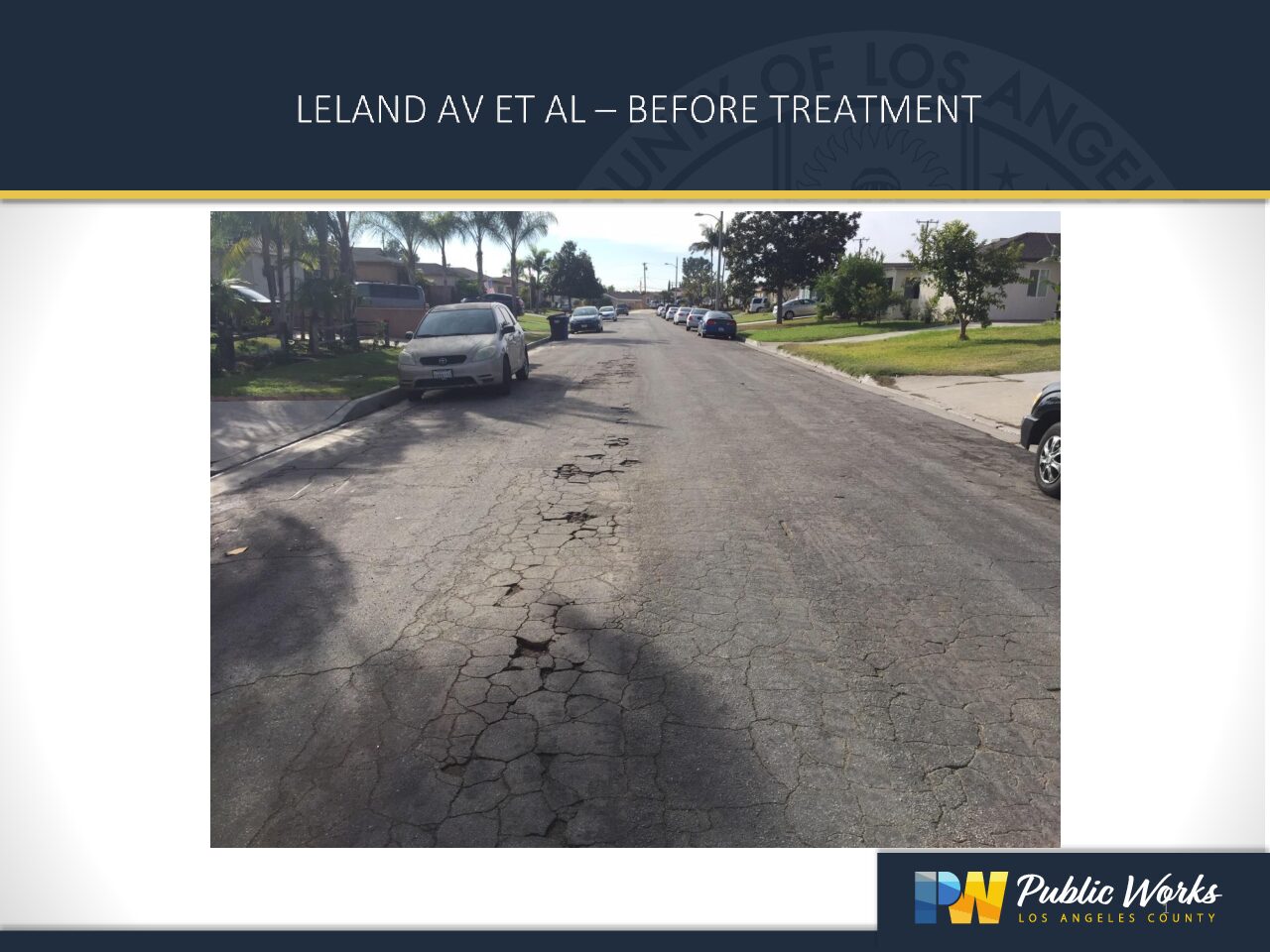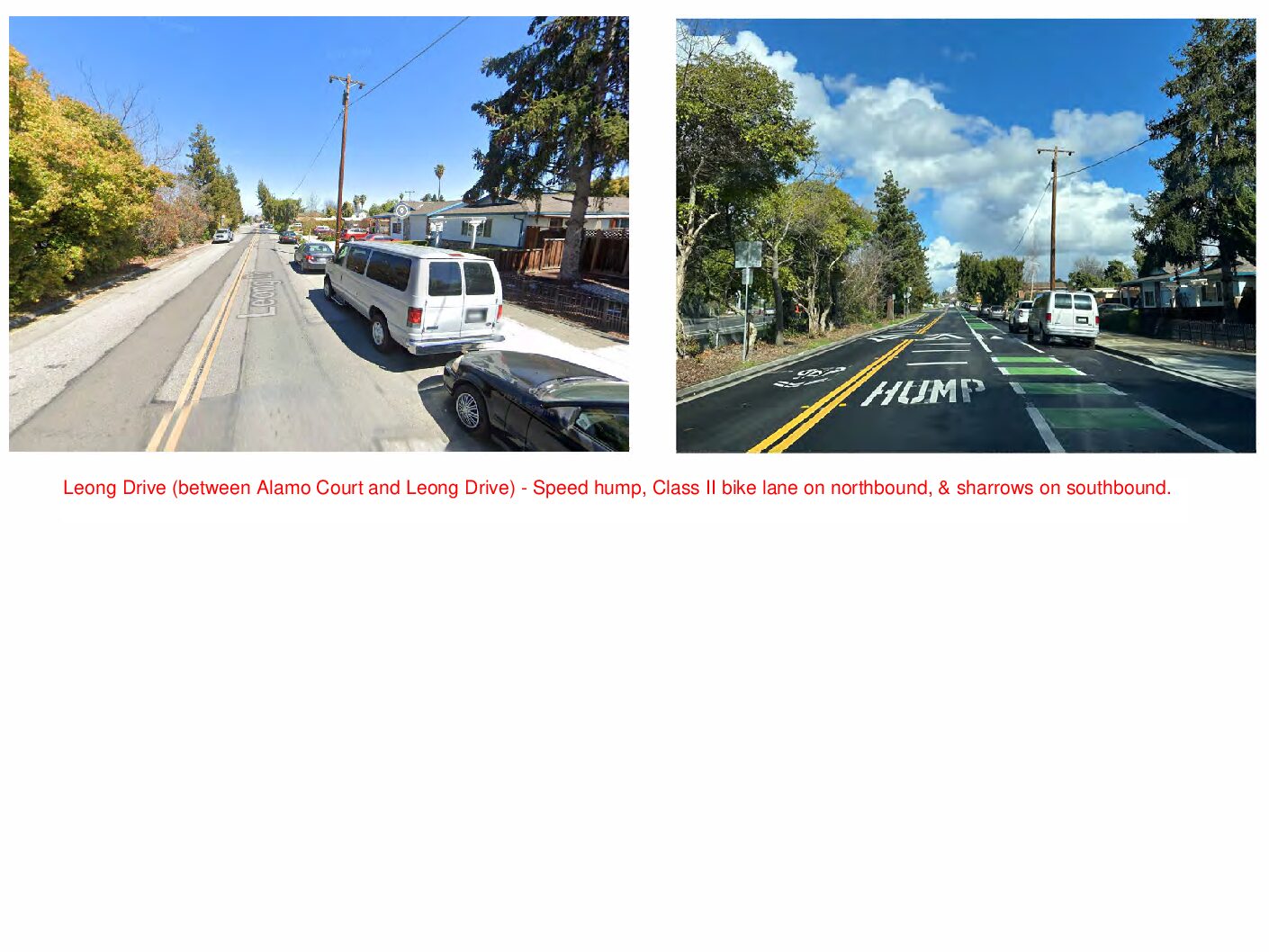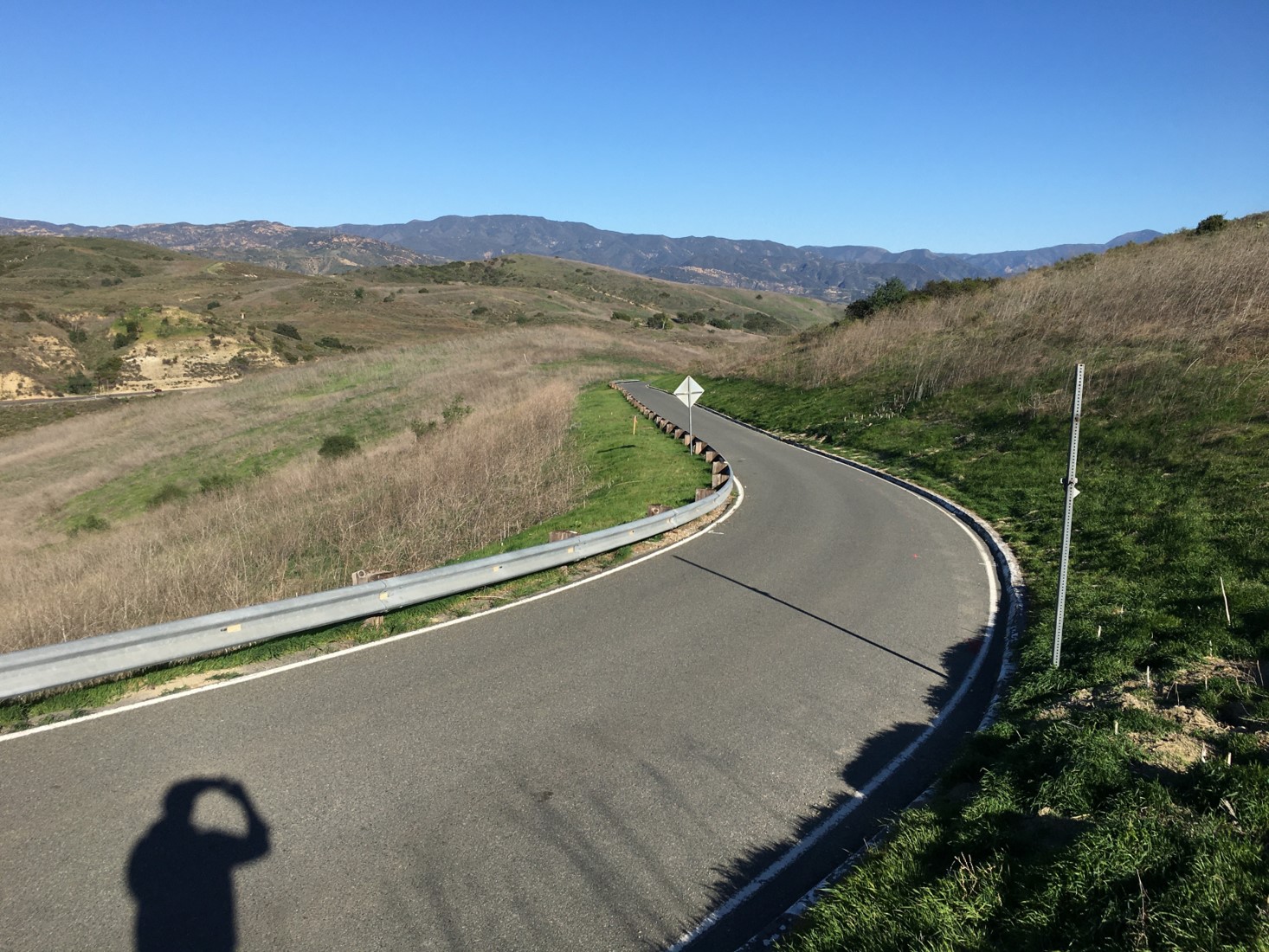Leland Avenue, et al., Street Improvement Project
Location
Unincorporated South Whittier
City or County Responsible for Project
Los Angeles County
Category
Roads: Efficient and Sustainable Road Maintenance, Construction and Reconstruction Projects.
Description
When it comes to street improvements, Los Angeles County Public Works has utilized sustainable pavement treatments with outstanding success. Public Works continues its commitment in preserving and improving the quality of our roads in a cost-effective and environmentally responsible way. California Mandate AB32 is a state law requiring the reduction of greenhouse gas (GHG) emissions and working within limited budgets were key motivators for developing Public Works’ sustainable approach which includes: (1) focusing on preserving roads in good condition; (2) using recycled materials in pavement treatments; and (3) reutilizing in-place materials during construction. The Leland Avenue, et al., Project that was completed in September 2023 showcases the benefits of Public Works’ sustainable approach. This project was funded with the Road Maintenance Rehabilitation Account funds.
Within the residential areas of unincorporated South Whittier, the pavement condition of nearly 6.1 miles of residential roads and alleys (1,100,000 square feet) was rated fair to poor, exhibited widespread distresses, localized base failure, and insufficient existing asphalt thickness for the majority of streets in the community. Reconstruction was considered the best solution for streets with inadequate structural sections. The traditional reconstruction method of removing and replacing the existing road materials estimated cost was $5.4 million. The County’s proposed sustainable reconstruction approach method of reutilizing the in-place materials estimated to save $3.4 million and achieved significant environmental benefits.
The project scope included resurfacing some streets that were in fair condition and had adequate structural sections by grinding and overlaying 1.5 inch of Asphalt Rubber Hot Mix (ARHM) and removing 3 inches of the existing Asphalt Concrete (AC) for use in the Cold Central Plant Recycling (CCPR) process; cement stabilizing 8 inches of the remaining AC, base, and subgrade; placing the removed 3 inches of reclaimed asphalt pavement using the CCPR process on the cement stabilized pulverized base; and constructing 1 1/2 inch of ARHM on the CCPR AC for roads that were in poor condition with a thin AC layer. Using this approach yielded significant benefits. The project shortened construction workdays and reduced traffic impacts. Environmental benefits included a 96 percent reduction in GHG emissions, 97 percent reduction in energy consumption, and 31,000 cubic yards of landfill reduction. The ARHM placed as the wearing surface resulted in 30,000 scrap tires being diverted from landfill. The cost savings of $3.4 million was reinvested to improve other County roadways and to include new curbs, gutters, and sidewalks with American with Disabilities Act-approved access ramps for the project. The project required collaboration between several divisions in Public Works, which streamlined the design and construction process to minimize the impact on residents.
In summary, the County’s sustainable pavement approach used in the Leland Avenue,
et al., Street Improvement Project improved the overall quality of the County’s road network in a cost-effective and environmentally friendly way. The three-pronged approach is a proven formula for addressing the issues of limited funding, reducing GHG, and conserving resources in a pragmatic manner. This project serves as a model and success story for other agencies looking to implement sustainable resurfacing and reconstruction treatments.
Project submitted by
Name
Hassan Alameddine
Job Title
Assistant Deputy Director
Organization
Los Angeles County Public Works
Address
900 S. Fremont Ave
halamedd@pw.lacounty.gov
Phone
626-458-4911




